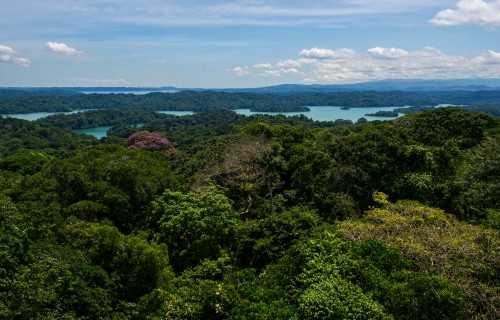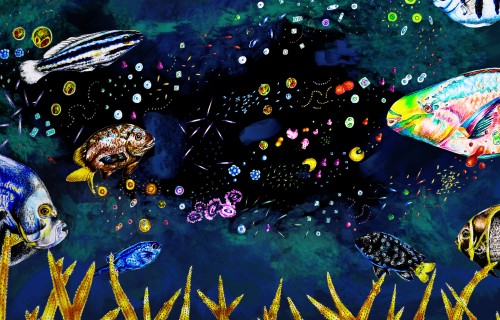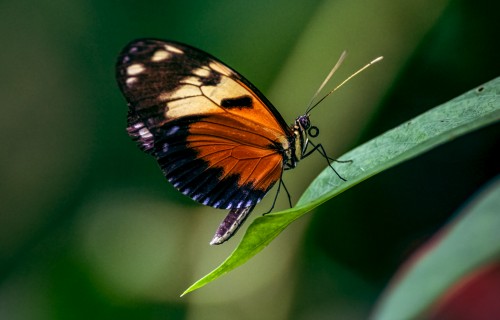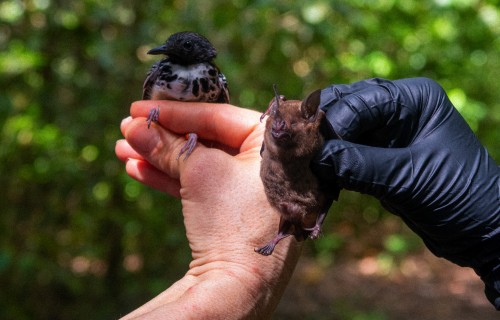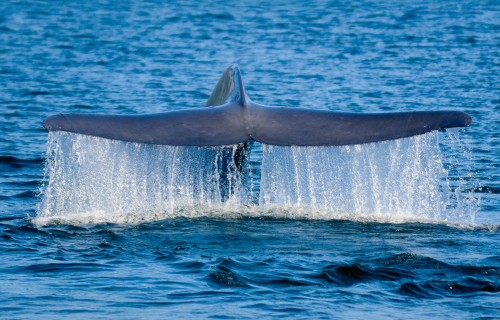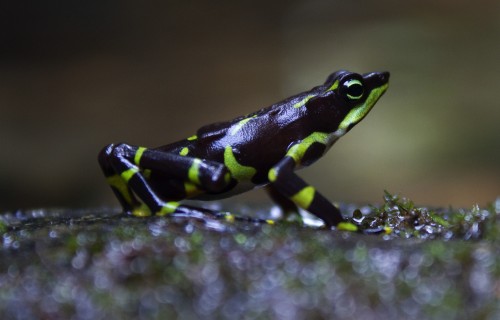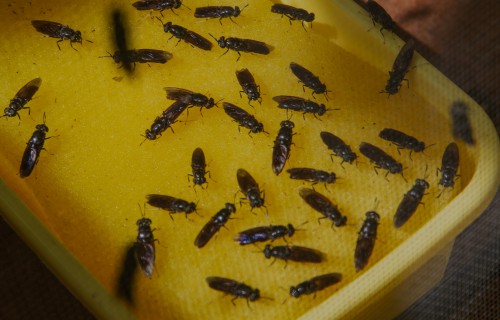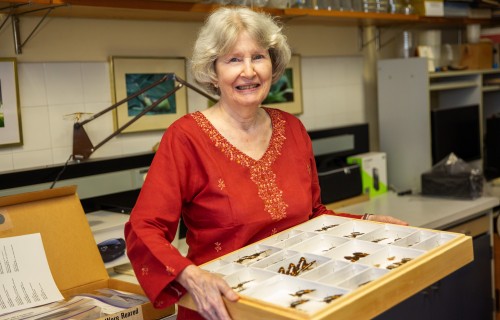Smithsonian science helps understand blue whale migratory and foraging patterns to inform conservation strategies
Noisy bunch
Researchers count manatees using their chatter to recognize individuals
By Vanessa Crooks
An improved method of identifying manatees by their vocalizations makes it easier to tell them apart, to better estimate their populations and help efforts for their conservation.
The same way we recognize someone we know by their voice, even in a noisy place, researchers seek to do the same with manatees. A new and improved method to record and isolate the manatees’ chatter makes it easier to identify and classify individuals, and therefore estimate their population numbers and movements more precisely.
This method is proposed by researchers from the Smithsonian Tropical Research Institute (STRI) and the Universidad Tecnológica de Panamá (UTP) in the new study “Unsupervised identification of Greater Caribbean manatees using Scattering Wavelet Transform and Hierarchical Density Clustering from underwater bioacoustics recordings”, published in the Frontiers in Marine Science journal.
Antillean manatees live in the San San Pond Sak wetland, a protected area in the district of Changuinola, in the Bocas del Toro province of Panama.
Credit: Héctor Guzmán, STRI
Some of the authors also worked on a previous method using classical clustering methods, to identify and group manatees by their vocalizations.
“The premise is that each manatee vocalizes specifically between 0.7 to 20 kHz using multiple tones during 362 milliseconds in average. Within these frequencies each one has a specific ‘spectral signature’,” said UTP’s Dr. Fernando Merchán, lead author of the publication explains. “And those spectral signatures can be used to identify how many individuals there are within a population.”
The Antillean manatee, also known as the Greater Caribbean manatee (Trichechus manatus manatus) is an herbivorous aquatic mammal that inhabits wetlands and rivers, from northern Mexico to the northeast of Brazil and in Antillean islands. It is considered an endangered species, mainly due to natural threats (because of their reduced genetic variability) and human-made threats (habitat degradation, illegal hunting and collisions with boats).
In Panama, manatees living in the San San and Changuinola rivers, located in the province of Bocas del Toro in northwestern Panama, are often victims of boat collisions. The government declared manatees a legally protected species.
But to aid conservation efforts, and establish effective policies for their protection, it is essential to have the tools to estimate current manatee populations and understand how they use their habitats.
Since Antillean manatees live in murky brackish waters, and wetlands and rivers are covered in thick underwater vegetation, traditional methods such as sonar or aerial visuals are not effective to track and identify them. Researchers are instead taking advantage of how vocal manatees are, frequently chattering to communicate with each other; these vocalizations can be recorded and linked to specific individuals. With the new algorithms, the goal is to make it even easier to detect differences between vocalizations, to identify individuals.
“This new method makes it much more efficient to identify manatees by acoustic methods. It’s basically using new algorithms based on recent developments in machine learning, to do the same thing but better,” said STRI marine scientist Héctor Guzmán. “And it’s all acoustics, like recognizing a person’s voice, their tone.”
To compare the new method to the previous one, Guzman and colleagues captured 23 manatees temporarily, in floating cages constructed with HDPE tubes, and recorded them for a period of 6 to 8 hours, using hydrophones and a digital recorder. Each captured manatee was also measured, the sex is determined, and any markings or scars were photographed.
Out of these 23 captured manatees, the researchers obtained 1,446 high-fidelity vocalizations, which the algorithm can group based on their similarities, a method very useful in wild environments where a lot is not known beforehand, such as population numbers. So far, they estimate that they’ve been able to identify around 100 manatees in the San San Pond Sak protected area, of which the rivers San San and Changuinola are part.
The new method analyzes the spectral signatures produced by a manatee, to differentiate individuals.
Credit: Héctor Guzmán, STRI
Using this method, the authors look toward refining the analysis process and obtain other data about the manatees from their vocalizations, such as gender and age, to get an even clearer picture of current manatee populations.
The Smithsonian Tropical Research Institute, headquartered in Panama City, Panama, is a unit of the Smithsonian Institution. The institute furthers the understanding of tropical biodiversity and its importance to human welfare, trains students to conduct research in the tropics and promotes conservation by increasing public awareness of the beauty and importance of tropical ecosystems.
Reference: Merchan, F., Contreras, K., Poveda, H., Guzmán, H. M., Sanchez-Galan, J. E. (2024). Unsupervised identification of Greater Caribbean manatees using Scattering Wavelet Transform and Hierarchical Density Clustering from underwater bioacoustics recordings, Frontiers in Marine Science, 11:1416247, doi: 10.3389/fmars.2024.1416247








